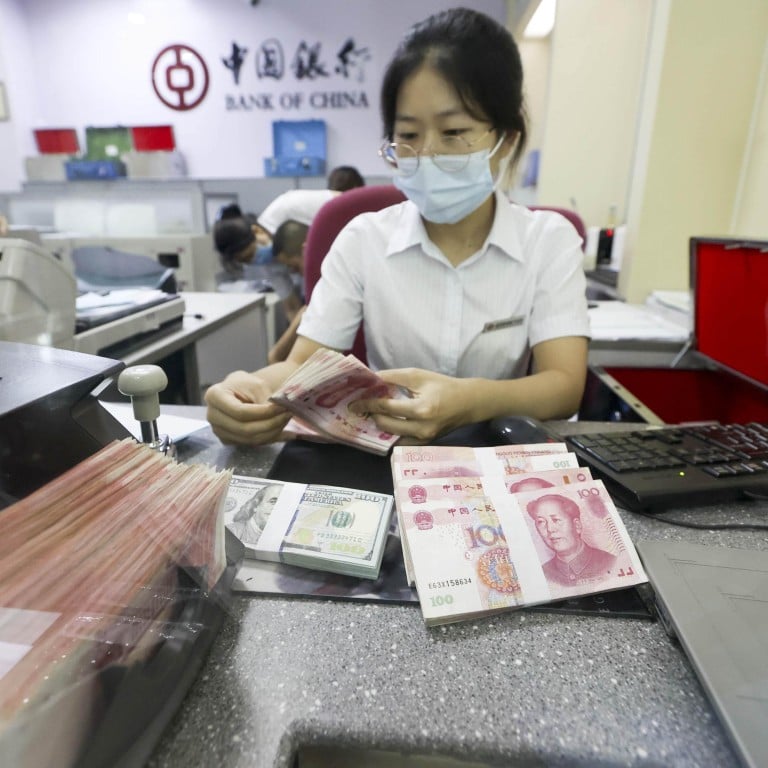
China’s Communist Party finance organ draws institutional road map for sector
- A Communist Party organ designated by China to regulate the financial industry, has set out its vision for the sector in a lengthy article
- Plans for broad reform enumerated to ensure institutions follow national objectives, set pure profit-making aside
China’s 461-trillion-yuan (US$63.7 trillion) financial industry and its regulatory regime will be heavily prioritised in a broad economic reshuffle engendered by the country’s top leadership, with the sector remoulded to serve national objectives like sustainable growth and advancement in the global tech race.
“China has cyclical and aggregate problems in its economic development, but structural problems are the most prominent, and the main contradiction lies on the supply side,” the article read. The piece was published on Wednesday and attributed to the CFC general office, headed by Vice-Premier He Lifeng.
“The key to promoting high-quality financial development is to deepen financial supply-side structural reform.”
The comments from the CFC follow a pronouncement from President Xi Jinping the country would become a “financial superpower” at the twice-a-decade central financial work conference in October, as well as further elaboration on what this would entail during a speech in January.
Preventing, resolving China’s financial risks are ‘eternal theme’: Xi Jinping
The CFC, designated to coordinate financial regulation and stave off risk in this endeavour, set broad goals for the sector in the article. These included a scientific, stable financial management system and a better-structured financial market.
“We must enhance the adaptability, competitiveness and inclusiveness of the financial system,” the commission said.
Like it or not, banks and other institutions … should expect top-down directives and overhauls
It also mandated that Chinese financial institutions have “higher efficiency” than their peers in the capitalist world and provide inclusive, accessible services in the pursuit of common prosperity.
“Like it or not, banks and other institutions on the supply side should expect top-down directives and overhauls cued by the CFC,” said Zhu Tian, a professor with the China Europe International Business School (CEIBS).
‘A whole new ball game’: China’s central bank looks to learn from US blunders
Use of the term “supply side” is reflective of Beijing’s prioritising financial institutions in its reform, he said.
“To adapt, their management and stakeholders should understand Beijing’s logic,” Zhu said. “Change is here, and old business and profit models may no longer apply. [They] may even land them in trouble.”
China now possesses the world’s largest banking sector, and its capital market ranks only behind the United States in terms of size. Banks, largely owned by governments at different levels, account for around 90 per cent of the country’s financial assets.
Reforms are long overdue to benefit the real economy
Despite the growing presence of foreign-funded players, their share in China’s banking industry is only around 1 per cent, while their proportion in bond and stock markets is estimated to be less than 3 per cent.
One potential outlet for structural change in the financial system could be its share of direct financing.
“Reforms are long overdue to benefit the real economy,” Hu said.
China’s three-legged race to fend off the 4 Ds of an economic apocalypse
Data from the People’s Bank of China, the central bank, showed direct financing including bonds and stocks represented 31 per cent of total social financing in 2023, with the remainder dominated by bank loans.
In the Study Times article, the CFC called for coordination and a holistic approach to reforms and management.
It demanded joint efforts from all levels of government – including financial regulators, economic and industrial planners, judicial authorities and disciplinary inspection agencies – as they all have “corresponding responsibilities.”
CEIBS’ Zhu said China’s financial players need to embrace these changes, including new responsibilities that fell outside their scope in the past, but more detailed measures should be rolled out to provide a clearer picture of what is expected of them.
“Financial reform narratives are usually laden with generalities but vague on specific, executable measures,” he added.
“Beijing’s focus should shift to ‘how’ after declaring ‘what’ it wants China’s financial sector to be.”


